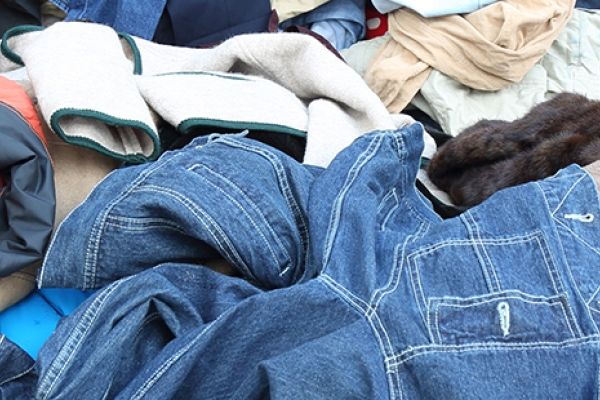In Europe, nearly 7 million tonnes of textiles end up as waste every year
On average, Europeans throw away some 16 kilograms of textiles every year. Together, this accounts for 6.95 million tonnes for the whole of Europe. This is according to a report by the ETC CE (European Environment Agency's European Topic Centre on Circular Economy and Resource Use) on textiles and circular economy. Of all discarded textiles, only 4.4 kilograms are selectively collected on average. The vast majority still ends up in residual waste.
VITO is the coordinating partner of the ETC CE and contributed to the concrete elaboration of the report.

Belgium is one of the frontrunners when it comes to the selective collection of textile waste, but that may also have to do with the way textile waste is monitored and reported quite accurately in our country.
Unlike other countries, Belgium has a fairly transparent system of waste collection. Textiles are collected in separate bags at people's homes, there are special textile containers on the streets and textiles are collected separately at the recycling park. This ensures that the results of the survey that took place in all European countries are quite accurate for Belgium, but also that this puts us, together with Luxembourg, in the lead among all European countries when it comes to textile collection. Yet even in Belgium, half of all textile waste still ends up in residual waste. That is a shame, because that way, discarded textiles cannot be reused or recycled. If textile collection and recycling are not stepped up in European countries, the share of textiles in waste risks exploding.
Nevertheless, separate collection of textiles is already mandatory in more than half of European countries at the moment, although in most countries it only concerns textiles that can be reused. In fact, there is currently a lot of ambiguity about what Europe means by ‘textile waste’. As a result, in some countries, unattended collection of used textiles is seen as waste collection, while in others, collection of textiles for re-use is not seen as ‘waste’. The revision of the Waste Framework Directive on Textile Waste should soon clarify this and provides for all European countries to organise a system of separate textile collection from 2025 onwards.
Today, only France, Hungary and the Netherlands have an EPR system - Extended Producer Responsibility system - which makes textile producers responsible for collecting and treating their discarded products. Flanders does not yet have such an obligation for textile.
Most textile waste comes from households, which account for 82 percent. Business textiles account for 17 percent and unsold textiles for 1 percent.
About ETC CE
The 'ETC on Circular Economy and resource use (ETC CE)' consists of 13 partners from 12 different European countries. VITO is the coordinating partner. The ETC CE supports the EEA in further developing the knowledge base for accelerating the transition to a circular economy.

Productie van textielafval in 2020, in kg per hoofd van de bevolking

Capture rates van textiel en schoenen per land, 2020







